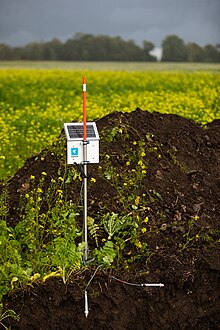**1. Soil Composition and Formation:**
– Soil composition includes water, gases, sand, silt, clay, and organic matter.
– Soil is about 50% solids and 50% voids filled with water and gas.
– Soil pores allow for air and water movement crucial for life.
– Soils develop profiles with distinct horizons influenced by parent material and processes.
– Soil forms through the interaction of climate, relief, organisms, and parent materials.
– Soil undergoes continuous development through physical, chemical, and biological processes.
**2. Soil Functions and Importance:**
– Soil supports plant growth, stores water, modifies the atmosphere, and provides habitat.
– Soil is essential for ecosystem services like nutrient recycling and water regulation.
– Soil aids in nutrient cycling, carbon sequestration, and water filtration.
– Soil provides physical support, nutrients, and protection for plants and animals.
– Soil is crucial for the Earth’s ecosystems and carbon cycle.
– Soil provides ecosystem services like water purification and nutrient recycling.
**3. Soil Properties and Interactions:**
– Soil texture is determined by sand, silt, and clay proportions.
– Soil bulk density estimates soil compaction.
– Soil porosity consists of voids occupied by gases or water.
– Mineral particles in soil flocculate to form aggregates or peds.
– Soil water content is measured as volume or weight.
– Soil development can be described in terms of color, porosity, consistency, and acidity.
**4. Soil Nutrient Cycling and Chemistry:**
– Nutrients in soil may be adsorbed on clay mineral surfaces or bound within organic compounds.
– Soil chemistry affects nutrient availability, physical properties, and living populations.
– Surface chemistry of colloids determines soil’s chemical properties.
– Cation-exchange capacity influences the ability of soil to hold and release ions.
– Most plant nutrients originate from minerals in the soil parent material.
– Soil pH affects plant nutrient availability.
**5. Soil Biodiversity and Reactivity:**
– Soil hosts a vast array of microbes, animals, plants, and fungi.
– Soil likely houses 59 ± 15% of Earth’s species.
– Soil biodiversity is challenging to study due to the invisibility of most life forms.
– Soil reactivity is measured by pH, ranging from 3.5 to 9.5 in soils.
– Cation exchange buffers soil pH and alters soil structure.
– Base saturation is the fraction of negatively charged soil colloid exchange sites occupied by base-forming cations.
Soil, also commonly referred to as earth or dirt, is a mixture of organic matter, minerals, gases, liquids, and organisms that together support the life of plants and soil organisms. Some scientific definitions distinguish dirt from soil by restricting the former term specifically to displaced soil.


Soil consists of a solid phase of minerals and organic matter (the soil matrix), as well as a porous phase that holds gases (the soil atmosphere) and water (the soil solution). Accordingly, soil is a three-state system of solids, liquids, and gases. Soil is a product of several factors: the influence of climate, relief (elevation, orientation, and slope of terrain), organisms, and the soil's parent materials (original minerals) interacting over time. It continually undergoes development by way of numerous physical, chemical and biological processes, which include weathering with associated erosion. Given its complexity and strong internal connectedness, soil ecologists regard soil as an ecosystem.
Most soils have a dry bulk density (density of soil taking into account voids when dry) between 1.1 and 1.6 g/cm3, though the soil particle density is much higher, in the range of 2.6 to 2.7 g/cm3. Little of the soil of planet Earth is older than the Pleistocene and none is older than the Cenozoic, although fossilized soils are preserved from as far back as the Archean.
Collectively the Earth's body of soil is called the pedosphere. The pedosphere interfaces with the lithosphere, the hydrosphere, the atmosphere, and the biosphere. Soil has four important functions:
- as a medium for plant growth
- as a means of water storage, supply, and purification
- as a modifier of Earth's atmosphere
- as a habitat for organisms
All of these functions, in their turn, modify the soil and its properties.
Soil science has two basic branches of study: edaphology and pedology. Edaphology studies the influence of soils on living things. Pedology focuses on the formation, description (morphology), and classification of soils in their natural environment. In engineering terms, soil is included in the broader concept of regolith, which also includes other loose material that lies above the bedrock, as can be found on the Moon and other celestial objects.
English
Pronunciation
- IPA(key): /sɔɪl̩/, [sɔɪ̯ɫ̩]
- Rhymes: -ɔɪl̩
Etymology 1
From Middle English soile, soyle, sule (“ground, earth”), partly from Anglo-Norman soyl (“bottom, ground, pavement”), from Latin solium (“seat, chair; throne”), mistaken for Latin solum (“ground, foundation, earth, sole of the foot”); and partly from Old English sol (“mud, mire, wet sand”), from Proto-Germanic *sulą (“mud, spot”), from Proto-Indo-European *sūl- (“thick liquid”).